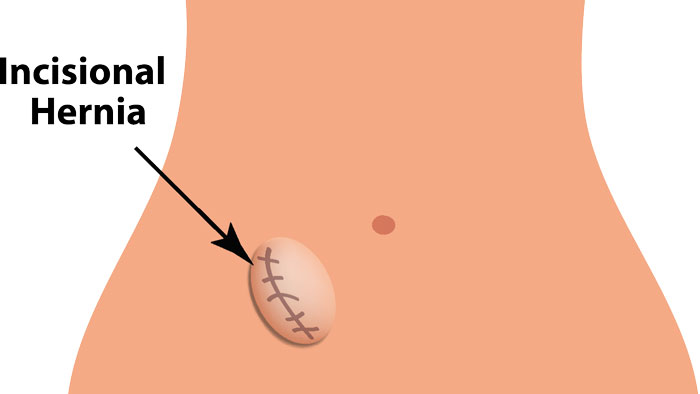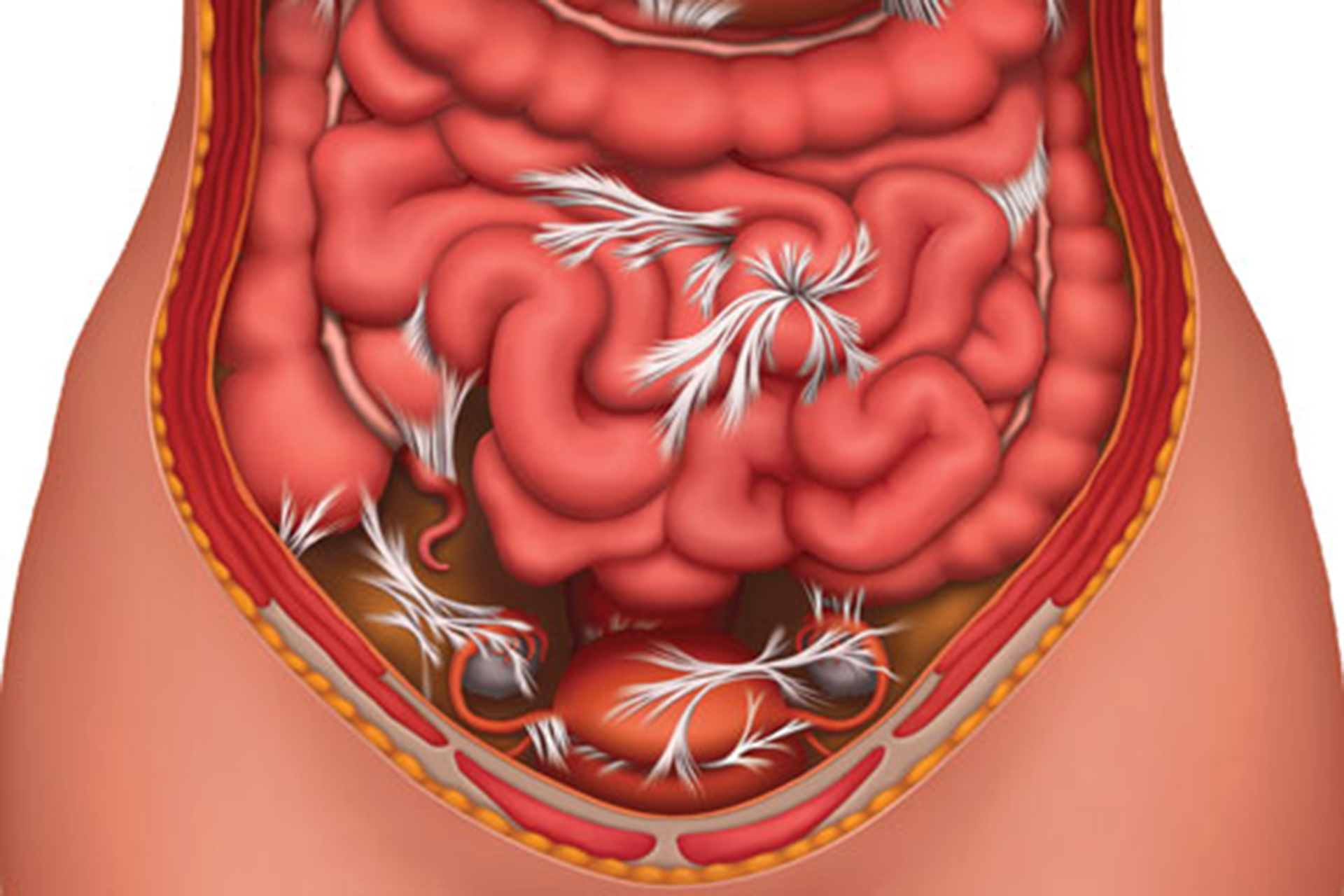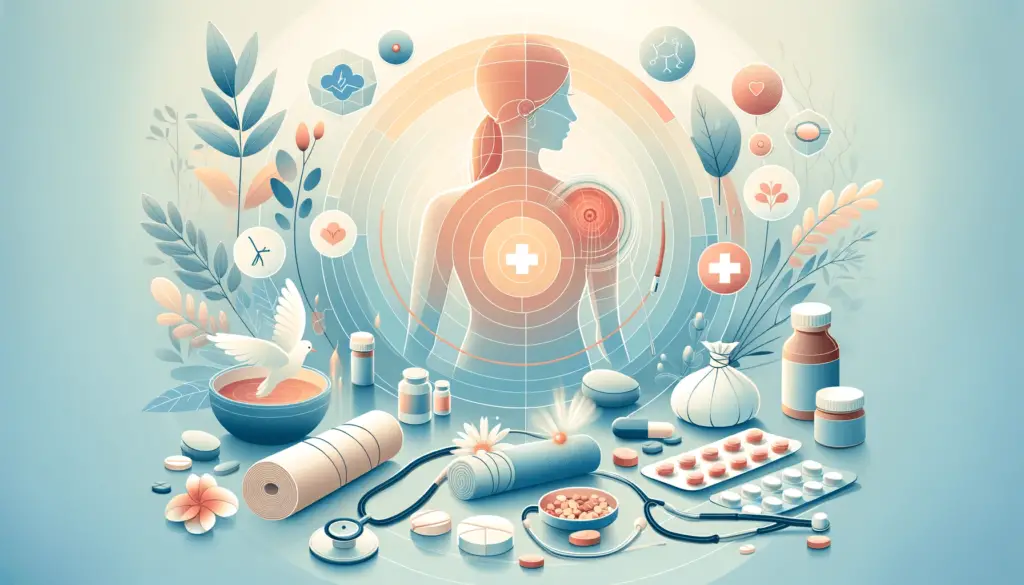Having a C-section is major surgery, and it can take some time to recover from it. While most women experience some pain during their recovery, some may experience sharp stabbing pain on the right side after c-section. This type of pain can be concerning for many women. In this article, we will discuss the causes of sharp stabbing pain on the right side after c-section and the treatment options available for it.
What Causes Sharp Stabbing Pain on the Right Side After C-Section?

There are several possible causes for sharp stabbing pain on the right side after a c-section. The most common cause is an incisional hernia, which occurs when part of the intestine protrudes through the abdominal wall near the site of an incision. Other causes include injury to the ilioinguinal nerve, abdominal adhesions, internal infection, and nerve damage due to surgical trauma.
Incisional Hernia

An incisional hernia occurs when part of your intestine protrudes through your abdominal wall near where your incision was made during your c-section. This can cause sharp stabbing pain in that area as well as swelling and tenderness around the hernia itself. If you notice any signs or symptoms of an incisional hernia after your c-section, you should contact your doctor immediately for further evaluation and treatment.
Injury to Ilioinguinal Nerve

The ilioinguinal nerve runs along your lower abdomen and groin area and can be damaged during a c-section if not properly handled by medical personnel during surgery. Damage to this nerve can cause sharp stabbing pain in that area, as well as numbness or tingling sensations in that region. If you experience any such symptoms after having a c-section, you should contact your doctor immediately for further evaluation and treatment.
Abdominal Adhesions

Abdominal adhesions are bands of scar tissue that form between two organs or tissues inside your abdomen following surgery or trauma to that area. These adhesions can cause sharp stabbing pain in that area due to their constricting nature, as well as difficulty with bowel movements or other digestive issues such as nausea or vomiting. If you experience any such symptoms after having a c-section, you should contact your doctor immediately for further evaluation and treatment.
Internal Infection
Another possible cause for sharp stabbing pain on the right side after c-section is an internal infection. Aside from abdominal pain, you might also experience fever, chills, nausea, vomiting, diarrhea, or other digestive issues if an infection has developed inside your abdomen following surgery. If you experience any such symptoms after having a C-section, you should contact your doctor immediately for further evaluation and treatment. Read: How to Get Rid of Yeast Infection on C-Section Scar
Nerve Damage Due To Surgical Trauma
In some cases, nerve damage due to surgical trauma may also be responsible for causing sharp stabbing pain on the right side after c-section delivery. This type of nerve damage is usually caused by improper handling of nerves during surgery or incorrect positioning during recovery afterward, which can lead to pinched nerves in that area, resulting in severe discomfort in that region, including sharp stabbing pain when touched or moved in certain ways. If you experience any such symptoms after having a c-section delivery, you should contact your doctor immediately for further evaluation and treatment.
Treatment Options for Sharp Stabbing Pain On The Right Side After C-Section?

If you are experiencing sharp stabbing pain on your right side after having a c-section, then it’s important to seek medical attention immediately so that any underlying issues can be identified and treated accordingly. Depending on what’s causing your symptoms, there are several treatment options available, including:
- Incisional Hernia: If an incisional hernia is causing your symptoms then surgery may be necessary in order to repair it properly; however this will depend upon its size and severity as well as other factors such as age and overall health status of the patient.
- Injury To The Ilioinguinal Nerve: If an injury has been sustained then physical therapy may be recommended in order to help strengthen surrounding muscles which will help reduce pressure placed upon affected nerves; however anti-inflammatory medications may also be prescribed depending upon the severity of the injury.
- Abdominal Adhesions: Surgery may be required if adhesions are large enough; however anti-inflammatory medications may also help reduce associated symptoms such as swelling and inflammation.
- Internal Infection: Antibiotics will usually be prescribed if an internal infection is suspected; however further tests may need to be carried out before antibiotics are administered so that the correct type and dosage can be determined accurately.
- Nerve Damage: Resting the affected area & avoiding activities that could aggravate symptoms should help reduce associated discomfort; however physical therapy & medications such as muscle relaxants and painkillers may also need to be taken depending upon the severity and duration of the condition being experienced by the patient.
Tips To Manage Sharp Stabbing Pain On The Right Side After C-Section Delivery
Recovering from a C-section involves more than just medical treatment; it also includes self-care and lifestyle adjustments. Here are some practical tips to help manage and cope with the pain:
1) Lifestyle Changes and Home Remedies
- Avoid Heavy Lifting: To reduce pressure on the incision, avoid lifting anything heavier than your baby for the first few weeks.
- Physical Therapy and Exercise: Engaging in physical therapy and gentle exercises, as recommended by your healthcare provider, can improve range of motion and strengthen weakened muscles.
- Comfort Measures: Wear loose, comfortable clothing to avoid irritation around the incision site. Holding a pillow against your incision when laughing or coughing can also provide relief.
- Natural Remedies: Heat therapy can ease postoperative pain. Applying warm compresses to the abdominal area can increase blood flow and relax muscles, reducing discomfort.
2) Dietary Adjustments
Incorporating anti-inflammatory foods and teas, like ginger tea, into your diet can help reduce inflammation. Staying hydrated and eating a balanced diet rich in fiber can alleviate constipation and promote healing.
3) Rest and Relaxation
Getting adequate rest is crucial for recovery. Aim for plenty of sleep and take short, regular breaks throughout your day. If possible, nap when your baby naps to maximize rest.
4) Gentle Movements
While complete bed rest is often recommended initially, gentle movements and stretching, as your body allows, can help reduce swelling and improve circulation around the incision area.
5) Emotional Support
Postpartum recovery is not just physical; it’s also emotional. Don’t hesitate to seek support from family, friends, or professional counselors, especially if you’re experiencing signs of postpartum depression.
Read: How to Get Rid of Yeast Infection on C-Section Scar
When to Seek Medical Help for Stabbing Pain after a C-Section
While some degree of discomfort is expected after a cesarean section, certain symptoms warrant immediate medical attention. It’s crucial to differentiate between normal postoperative pain and signs of complications.
Identifying Serious Complications
If you experience any of the following symptoms, it’s important to contact your healthcare provider promptly:
- Persistent or Worsening Pain: Pain that doesn’t improve with time or becomes more intense can indicate complications such as infections or adhesions.
- Fever or Chills: These can be signs of an infection at the incision site or internally.
- Redness, Swelling, or Discharge from the Incision: These symptoms could suggest an infection or poor healing.
- Heavy Bleeding or Unusual Vaginal Discharge: These could be signs of internal complications or issues with the uterus.
- Difficulty in Urinating or Bowel Movements: Problems with urination or bowel movements can indicate internal issues, such as adhesions or hernias.
Understanding When Pain is Not Normal
It’s essential to remember that while post-C-section pain is common, it should gradually diminish over time. Pain that increases in intensity, changes in nature, or is accompanied by other symptoms like those mentioned above, is not normal and should be evaluated by a healthcare professional.
Why Do I Have Sharp Stabbing Pain on the Right Side After C-Section Years Later
If you have experienced a sharp stabbing pain on your right side years after having a c-section, you are not alone. This pain is often caused by adhesions, which are scar tissues that build up in the area of the incision. These adhesions can pull on nerves and cause pain, especially when you move or stretch. If you are experiencing this type of pain, it is important to speak with your doctor. They may recommend physical therapy or surgery to help alleviate the pain. It is important to address this issue as soon as possible to prevent it from impacting your daily life.
Final Thoughts
Sharp stabbing pain on the right side after C-section delivery is very common, but fortunately there are several different treatments available that may help alleviate some of these painful symptoms associated with this condition. If you experience persistent pain following your surgery, make sure to contact your doctor immediately so that they can diagnose what is causing it and provide appropriate treatment recommendations.
Read: What is the Best Baby Carrier For Back Pain Relief?
FAQ
How long does sharp pain last after C-section?
The sharp pain can last for days or weeks after the C-section and can be managed with medications and physical therapy.
How do you know if something is wrong internally after C-section?
If something is wrong internally after a C-section, you may experience fever, chills, increased redness or swelling around the incision site, foul smelling discharge from the incision site, nausea and vomiting.
What is the common problem after C-section?
Common problems after a C-section include back pain due to muscular strain or nerve damage as well as fatigue and emotional stress.












